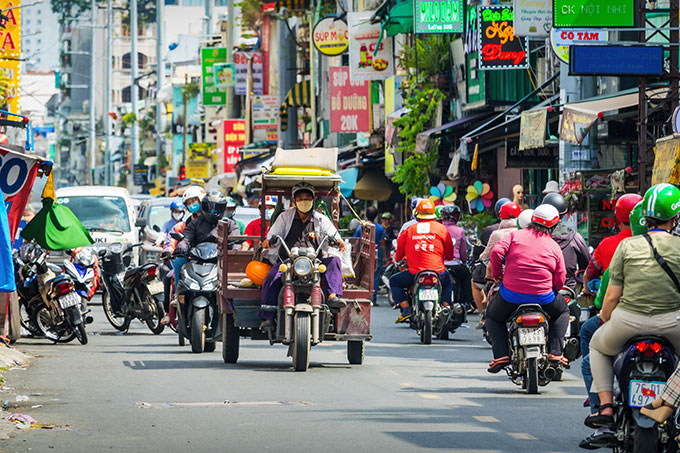For Americans, Saigon is both a place and a symbol, a welter of impressions and a locus of deep feeling. Between 1955, when President Dwight Eisenhower sent the first U.S. military advisors to counter a nascent Communist insurgency, and 1975, when the North Vietnamese Army rode victorious through the streets, millions of Americans passed through the city. They brought their Yankee dollars. In the early years, they also brought confidence, goodwill, and idealism—none of which survived contact with the enemy.
I am calling the city Saigon, though its official name, since 1975, has been Ho Chi Minh City. In my experience, most locals call it Saigon. Not that the Vietnamese are nostalgic. Having defeated two colonial empires and now surrounded by other successful societies in Asia, they are not burdened by insecurity. They are busy building their country, both according to the idea they held in their minds through decades of hardship and in pursuit of a technological future they probably can scarcely imagine.
All countries are eventually called beautiful, but few would deny that Vietnam is beautiful. The crowdedness of the Saigon streets is overwhelming, but what initially presents itself as chaos is revealed in time to have an underlying order. The elegance of Vietnamese women is an Orientalist cliché, perhaps, but the facts bear out the cliché. How long would a Westerner have to spend in Vietnam to get past his received ideas about the place? I do not know. We may begin with those received ideas, however; they were formed out of real experience.
The Vietnamese did not turn out to be very sound Communists. They left the Catholic churches standing, including Notre Dame Cathedral Basilica, built by French colonizers in the 1860s and 1870s with glass and tiles imported from Chartres and Marseille. When genocidal Maoists seized neighboring Cambodia, it was Vietnam that invaded and deposed the Khmer Rouge in 1979. Vietnam suffered under a centrally planned economy, but when Le Duan, who had led the nation to victory over the Americans, died in 1986, new leadership embraced the market. Reminders of the war are everywhere, including the War Remnants Museum, which features an exhibit of fetuses deformed by Agent Orange. Yet the relationship between Americans and Vietnamese is now marked by a willed comity and even a kind of sweetness.

On April 30, 1975, United States Ambassador Graham Martin, bearing a folded American flag, was helicoptered off the roof of his embassy just ahead of the advancing North Vietnamese Army. The American Marines who defended the building in South Vietnam’s final days saved many lives, both American and Vietnamese. After Saigon fell, the building was used as the headquarters of the Vietnamese national oil company before being handed back to the U.S. when relations were normalized in 1995. This is the U.S. experience in Vietnam in microcosm: bitter defeat, salvaged valor, forgiveness, and reconciliation.
Vietnam’s rapid modernization has created an intergenerational dislocation. No Vietnamese under 50 today experienced the war, and the young cannot possibly grasp the sacrifices that were made on their behalf. What does a 30-year-old entrepreneur, swimming in the predatory waters of his country’s burgeoning tech sector, want to know about Dien Bien Phu and the Tet Offensive, the battles that forged modern Vietnam? All he knows is that the KPIs are lagging and his lead developer just gave notice. The world moves on.
It may be that the future of Asia is Chinese, in which case the U.S. will recede in importance for the Vietnamese. Vietnam will always be important to Americans, though. The Vietnam War is the event in our history that we cannot seem to metabolize. It fractured our politics and dimmed our spirit. Vietnam itself, however, and above all the Vietnamese people have generated in us an affection more durable than the hatred that accompanies combat. When we want to remember, we might find ourselves going to Saigon. That is where our beautiful idea of Vietnam still burns brightest.
Top Photo: Bettmann / Contributor / Bettmann via Getty Images
City Journal is a publication of the Manhattan Institute for Policy Research (MI), a leading free-market think tank. Are you interested in supporting the magazine? As a 501(c)(3) nonprofit, donations in support of MI and City Journal are fully tax-deductible as provided by law (EIN #13-2912529).

















